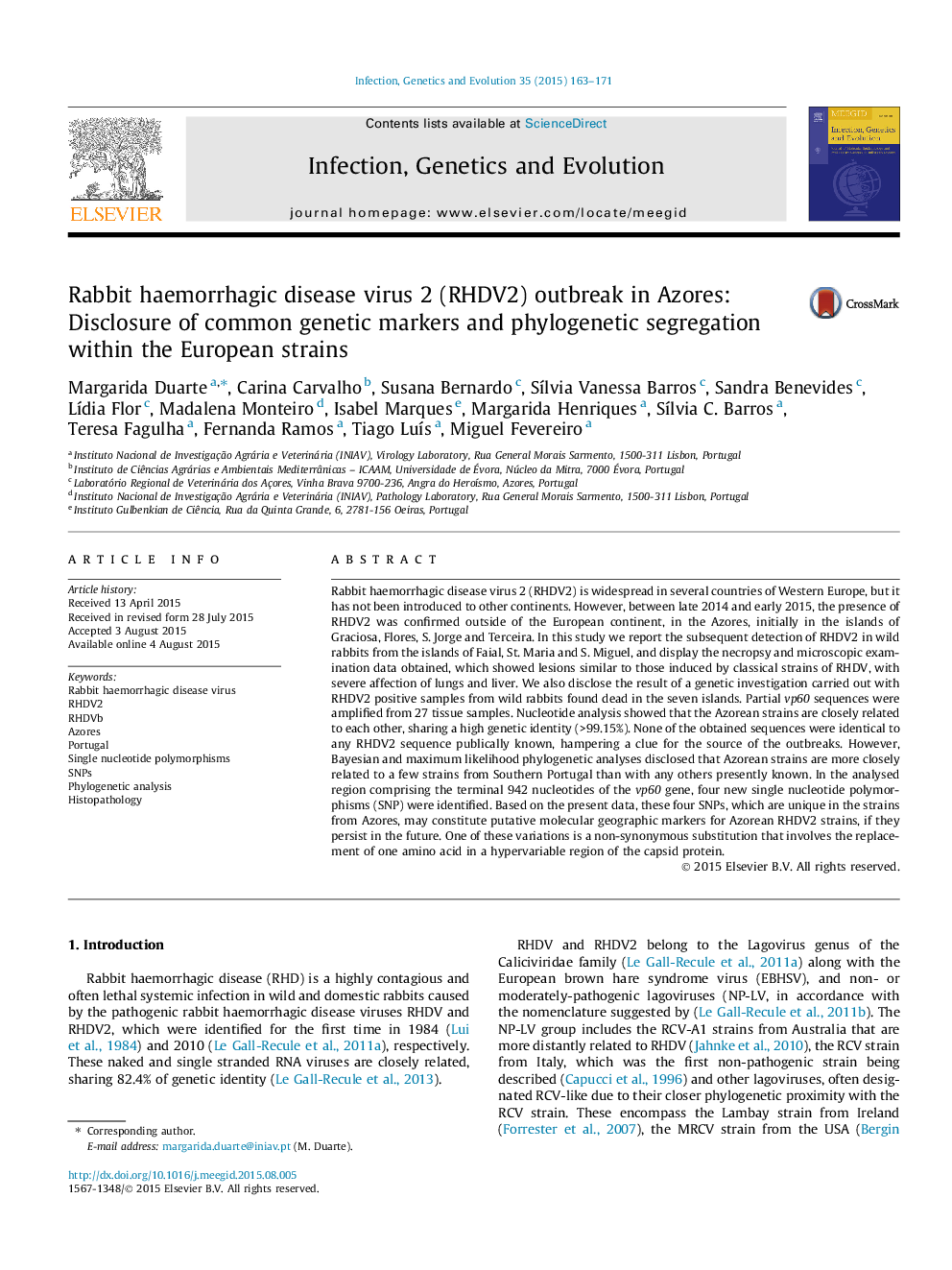| کد مقاله | کد نشریه | سال انتشار | مقاله انگلیسی | نسخه تمام متن |
|---|---|---|---|---|
| 5908446 | 1570168 | 2015 | 9 صفحه PDF | دانلود رایگان |

- First report of RHDV2 in wild rabbits from Faial, S. Miguel and St. Maria islands of Azores, Portugal.
- Identification of four SNPs in the RHDV2 Azorean strains, collected in 2014 and early 2015.
- Similarity among RHDV2 Azorean strains suggests a common source of infection for the seven islands.
- Phylogenetic analysis disclose closer relation between Azorean strains and strains from Southern Portugal.
- Azorean RHDV2 strains share a non-synonymous substitution in the sequence coding one hypervariable region of VP60.
Rabbit haemorrhagic disease virus 2 (RHDV2) is widespread in several countries of Western Europe, but it has not been introduced to other continents. However, between late 2014 and early 2015, the presence of RHDV2 was confirmed outside of the European continent, in the Azores, initially in the islands of Graciosa, Flores, S. Jorge and Terceira. In this study we report the subsequent detection of RHDV2 in wild rabbits from the islands of Faial, St. Maria and S. Miguel, and display the necropsy and microscopic examination data obtained, which showed lesions similar to those induced by classical strains of RHDV, with severe affection of lungs and liver. We also disclose the result of a genetic investigation carried out with RHDV2 positive samples from wild rabbits found dead in the seven islands. Partial vp60 sequences were amplified from 27 tissue samples. Nucleotide analysis showed that the Azorean strains are closely related to each other, sharing a high genetic identity (>99.15%). None of the obtained sequences were identical to any RHDV2 sequence publically known, hampering a clue for the source of the outbreaks. However, Bayesian and maximum likelihood phylogenetic analyses disclosed that Azorean strains are more closely related to a few strains from Southern Portugal than with any others presently known. In the analysed region comprising the terminal 942 nucleotides of the vp60 gene, four new single nucleotide polymorphisms (SNP) were identified. Based on the present data, these four SNPs, which are unique in the strains from Azores, may constitute putative molecular geographic markers for Azorean RHDV2 strains, if they persist in the future. One of these variations is a non-synonymous substitution that involves the replacement of one amino acid in a hypervariable region of the capsid protein.
Journal: Infection, Genetics and Evolution - Volume 35, October 2015, Pages 163-171